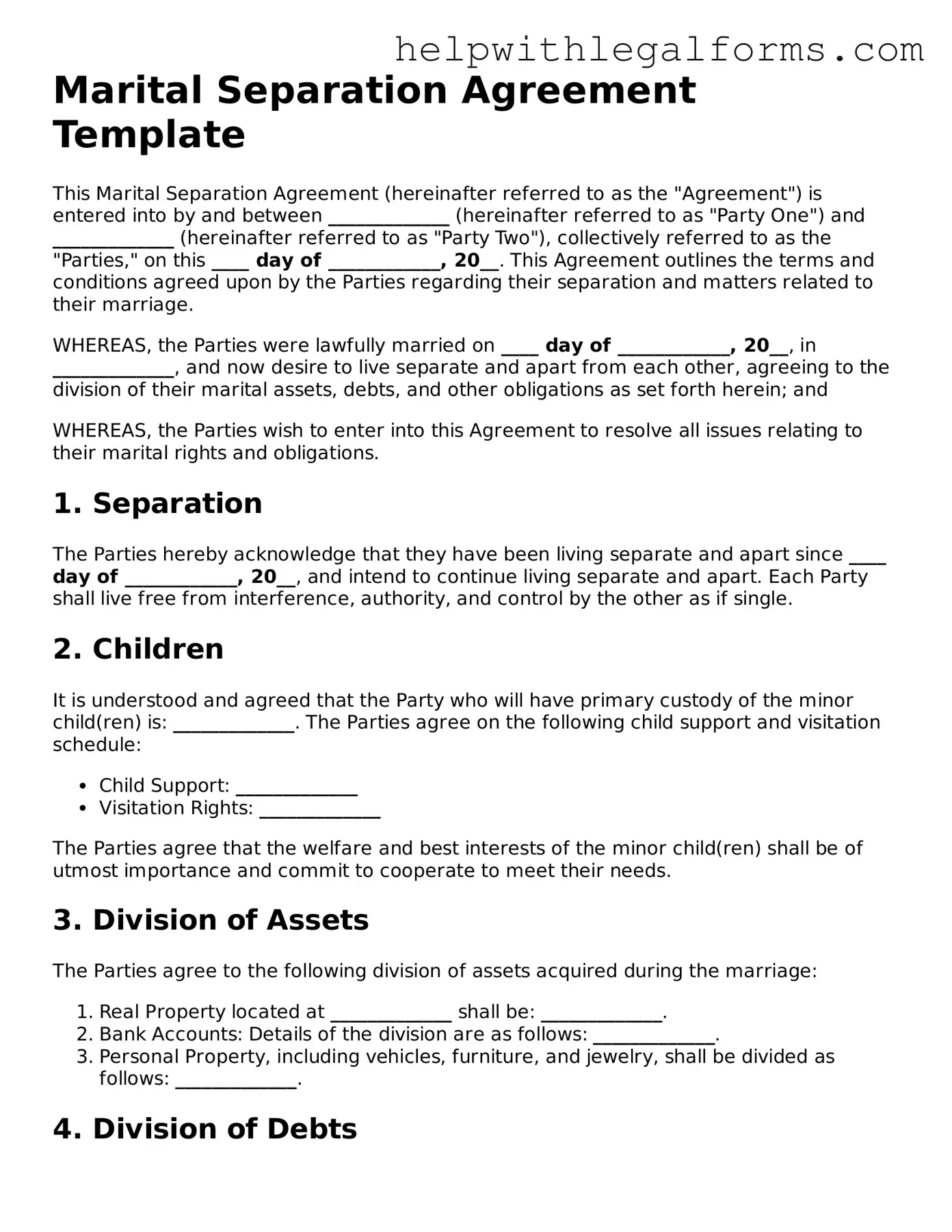Marital Separation Agreement Template
This Marital Separation Agreement (hereinafter referred to as the "Agreement") is entered into by and between _____________ (hereinafter referred to as "Party One") and _____________ (hereinafter referred to as "Party Two"), collectively referred to as the "Parties," on this ____ day of ____________, 20__. This Agreement outlines the terms and conditions agreed upon by the Parties regarding their separation and matters related to their marriage.
WHEREAS, the Parties were lawfully married on ____ day of ____________, 20__, in _____________, and now desire to live separate and apart from each other, agreeing to the division of their marital assets, debts, and other obligations as set forth herein; and
WHEREAS, the Parties wish to enter into this Agreement to resolve all issues relating to their marital rights and obligations.
1. Separation
The Parties hereby acknowledge that they have been living separate and apart since ____ day of ____________, 20__, and intend to continue living separate and apart. Each Party shall live free from interference, authority, and control by the other as if single.
2. Children
It is understood and agreed that the Party who will have primary custody of the minor child(ren) is: _____________. The Parties agree on the following child support and visitation schedule:
- Child Support: _____________
- Visitation Rights: _____________
The Parties agree that the welfare and best interests of the minor child(ren) shall be of utmost importance and commit to cooperate to meet their needs.
3. Division of Assets
The Parties agree to the following division of assets acquired during the marriage:
- Real Property located at _____________ shall be: _____________.
- Bank Accounts: Details of the division are as follows: _____________.
- Personal Property, including vehicles, furniture, and jewelry, shall be divided as follows: _____________.
4. Division of Debts
The Parties agree to the following division of debts incurred during the marriage:
- Mortgage/Rent: _____________
- Credit Cards: _____________
- Other Loans: _____________
5. Alimony/Spousal Support
The Party responsible for paying alimony/spousal support is _____________. The amount and terms of payment are as follows: _____________.
6. Legal Names
Following the execution of this Agreement, Party One and/or Party Two will be legally entitled to resume the use of their pre-marriage surname if they so choose.
7. Entire Agreement
This Agreement constitutes the entire agreement between the Parties regarding their separation and supersedes all prior discussions, agreements, or understandings, whether oral or written. Any amendments to this Agreement must be in writing and signed by both Parties.
8. Governing Law
This Agreement shall be governed by the laws of the State of _____________, without giving effect to any principles of conflicts of law.
9. Signatures
IN WITNESS WHEREOF, the Parties have executed this Agreement as of the date first above written.
Party One Signature: _______________________ Date: _________
Party Two Signature: _______________________ Date: _________
